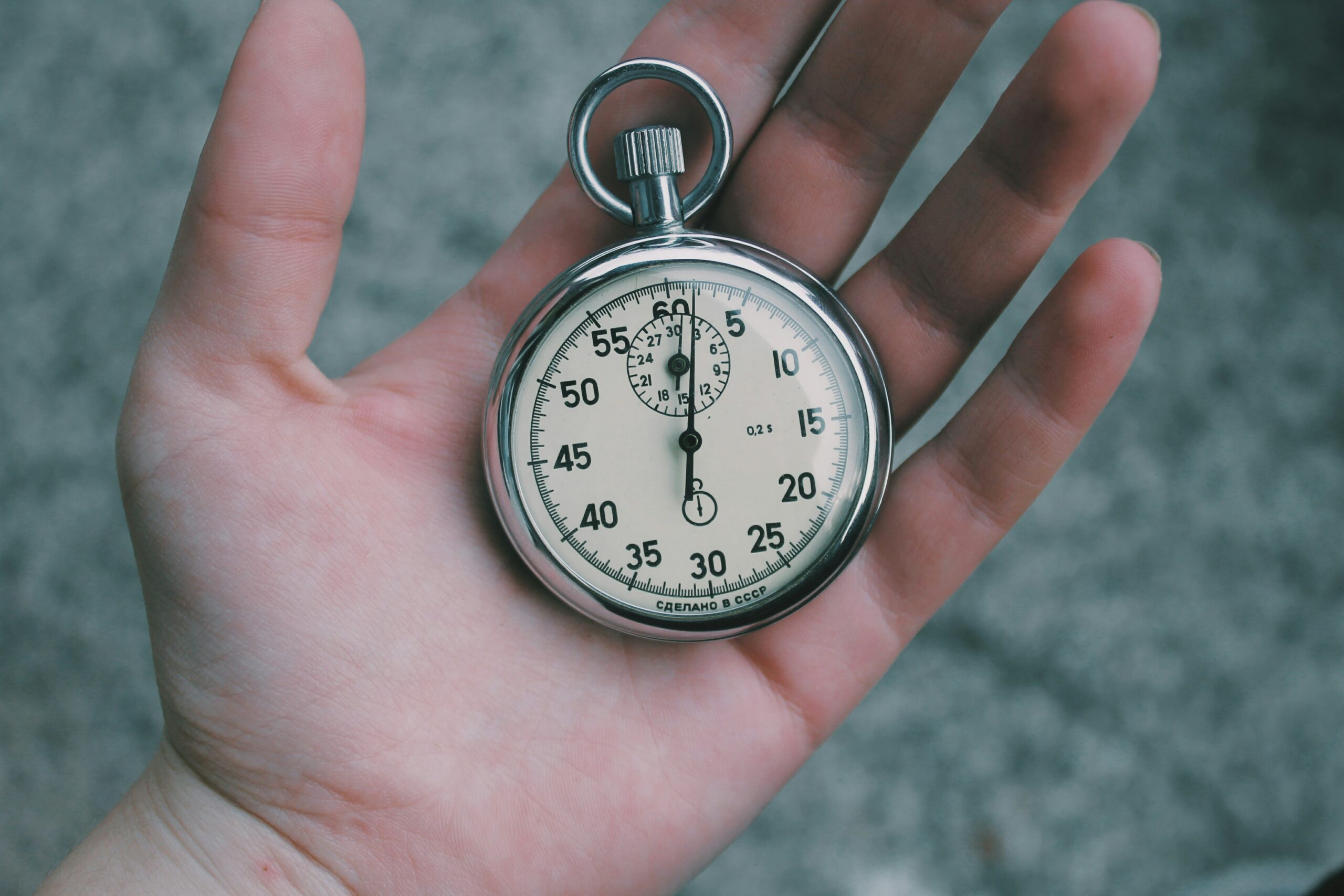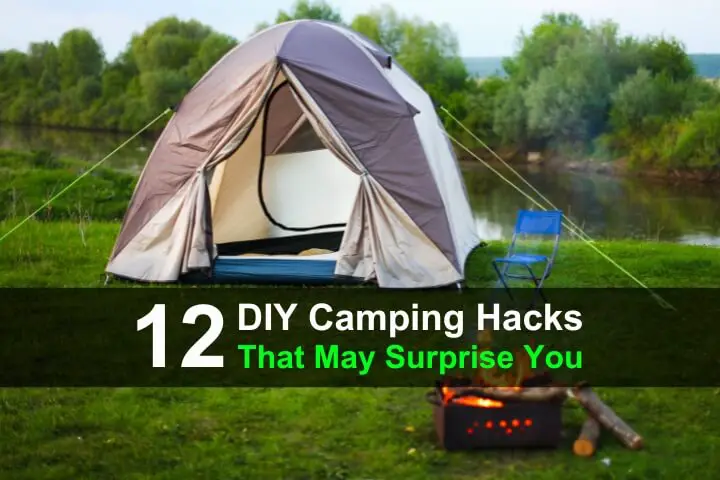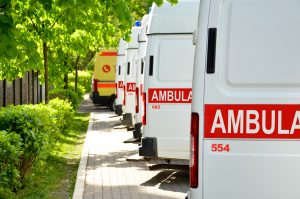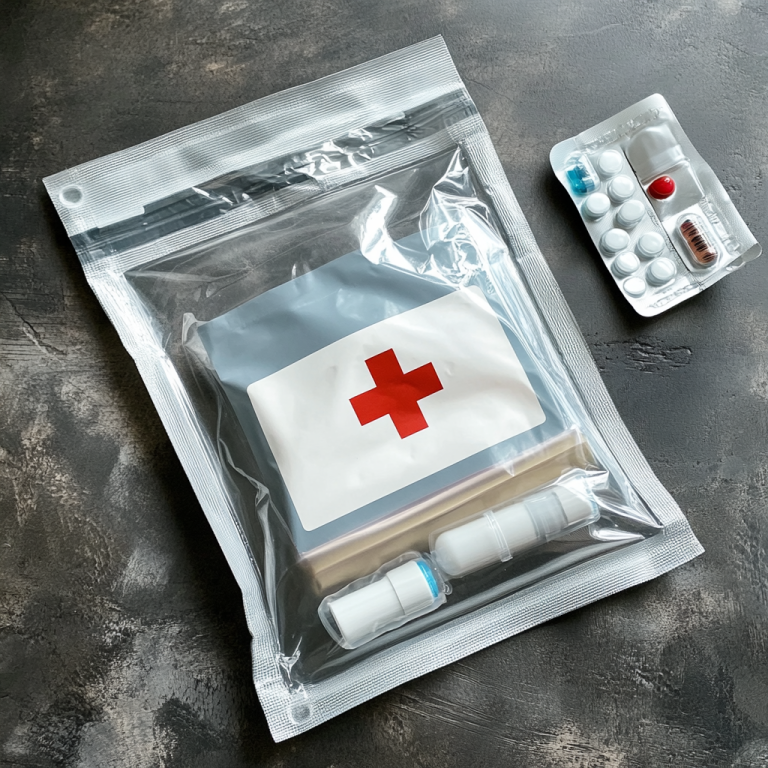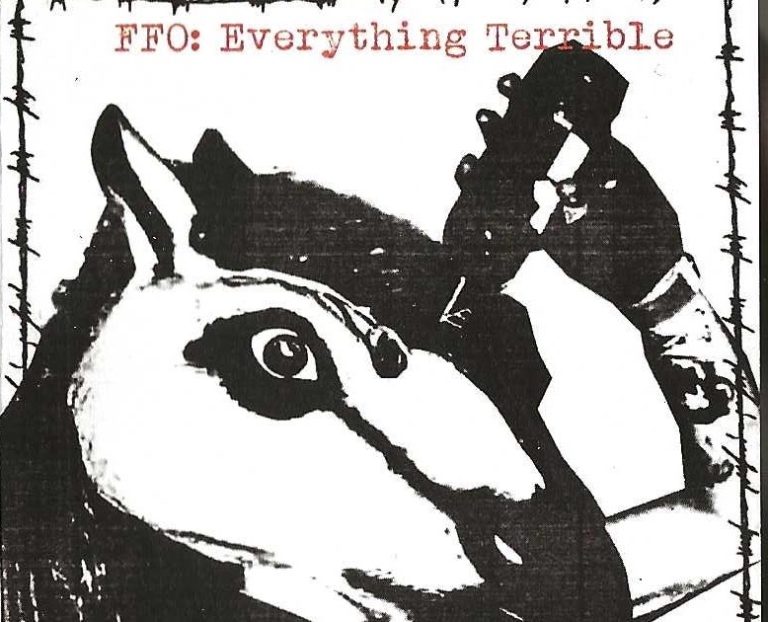Are you feeling overwhelmed by the thought of emergency preparedness? This quick-start guide is designed to help you prioritize and implement essential preps in a hurry, whether you’re concerned about natural disasters, social unrest, or other unforeseen events. By following these simple steps, you can take care of the most essential preps as fast as possible

Some of the links in this post may contain affiliate links for your convenience. As an Amazon Associate, I may earn a small commission from qualifying purchases without any increase in price to you.
Fast-Track Your Preps With These Steps
Step 1: Pick one thing to prepare for
Decide what you’re preparing for. This step helps clarify your focus and set priorities. While some things are the same for most emergencies, preparing for income loss, hurricanes, power outages, earthquakes, etc., each requires a different approach.
Since you want to get prepped quickly, what event is the most imminent? If you live in hurricane country, and it’s early February, hurricane-prepping won’t be as imminent as, perhaps, increased criminal gang activity happening NOW. This Survival Mom worksheet will help you decide what you should prepare for in four categories: extreme weather, natural disasters, man-made events, personal emergencies, such as a job loss.
LEARN MORE: Read this post for tips and a worksheet to help you decide what you should prepare for in four categories: extreme weather, natural disasters, man-made events, personal emergencies, such as a job loss.
Step 2: Financial prepping
Examine your financial situation. How much money do you have to spend on preparedness and how much do you have set aside in cash? If you’re in a hurry to improve your family’s odds of survival, you’ll need a healthy amount of money on hand. Survival Moms (and Dads) who have been at this for a while have spread out their expenses over many months and years.
Do not go into debt in order to be prepared. You don’t want to face an uncertain future with credit card bills arriving every month. Do what you can with what you have.
Few people have unlimited financial resources, so make a list of purchases and prioritize them. A few items on your list might be a good quality water filter, a few extra weeks worth of food, a generator, and extra fuel. With the most imminent emergency in mind, what item on your list needs to be purchased first? Thrift stores and yard sales can sometimes have amazing bargains that are perfect for emergency prepping.
Cash in hand, hidden in clever niches around the house, is good in case of a power outage that takes down banking machines. If you need to buy food or a hotel room along an evacuation route, you’ll be glad to have actual cash. How much? Whatever you can squirrel away.
LEARN MORE: Learn quick ways to save more money for prepping.
Step 3: At least 30 days of food storage
Food storage will be one of your main goals, regardless of what happens. Grocery store prices are rising, containers are getting smaller, and consumers are losing out. Do a quick inventory of your pantry and see what you already have that can be set aside toward a one-month food storage goal. (One month is the minimum storage goal.)
There’s nothing wrong with stocking up on canned food. It’s packaged for long-term storage as long as it’s stored in a cool location (less than 70 degrees Fahrenheit).
Step 4: Keep meals simple
Make a list of simple breakfasts, lunches, and dinners that you can make with ingredients that do not require refrigeration in case of a power outage. These recipes should be simple and easy to prepare. In the face of an emergency, do you really want to be slaving over a hot stove three times a day? I think not. They should also be things your family will really eat.
Be flexible. There’s nothing wrong with planning to eat the same meals over and over again. There’s also nothing wrong with deciding that eating canned soup for lunch is a good thing or eating only two meals a day. The adage, “Breakfast is the most important meal of the day,” was widely promoted by the founder of Kellogg Company as a way to profit from his breakfast cereals. Feel free to skip breakfast if that’s your usual habit or to make life more simple during an emergency. At this point, you’re establishing your back-to-the-wall food storage supply.
For now, it’s most important to stock up quickly on familiar foods. Make a grocery list of all the ingredients for the meals on your list, and then go shopping. If you can get your hands on coupons and can check the grocery store ads for discounts, so much the better.
LEARN MORE: Learn more about strategies for storing canned goods in your emergency food pantry.
Step 5: Have multiple ways to cook off-grid
Regardless of the type of emergency you’re focusing on, plan on at least two ways to cook food and heat water in case of a power outage. Survival Mom recommends a solar oven, which doesn’t require stocking up on any type of fuel. Read her review of the SunOven.
However, if you live in a shady area or there’s a lot of cloud coverage, you’ll need a backup. For that, we recommend a simple rocket stove. You can make one yourself with only a few bricks or buy one online. We have tested and recommend the EcoZoom stove. The advantage of a rocket stove is its design. It requires very little fuel and heats up quickly.
LEARN MORE: This article lists several other methods for cooking off-grid.
Step 6: Stock up on supplies for the home
Besides food, you’ll need cleaning supplies, laundry soap, toilet paper, and extra prescription and over-the-counter drugs. Your pets will need their own food and supplies.
Again, shop dollar stores, Walmart, and compare those prices with Amazon. Stock up on at least an extra 30 days worth of each item.
LEARN MORE: Discover which non-food items you can stock up on quickly at Walgreens.
Step 7: Safeguard your finances
Decide how you want to safeguard your finances if one of your main concerns is a drastic drop in the value of the dollar. The prices of gold and silver have been rising steadily as the value of the dollar declines. Do you want to take some of your cash and purchase gold and silver?
These aren’t decisions to take lightly, and Survival Mom isn’t giving any specific financial advice. However, with the emergence of BRICS and rapidly increasing inflation, the stability of the American economy and the dollar is less stable than ever.
Are you adequately insured? It’s hard to tell how a national financial crisis would affect insurance carriers, but with a policy in hand, you’ll have some recourse if your home is vandalized, your car is stolen, etc. As mundane as it is, insurance has quite literally saved the lives of many people following a major disaster.
One more way to safeguard your finances is to assess which major purchases, improvements, and/or renovations should be done sooner rather than later.
LEARN MORE: Learn how to add multiple income streams to your life for added financial security.
Step 8: Have a survival water plan
Water is vital to survival, and water-related emergencies happen often in the form of boil notices, broken water lines, and tainted water supplies. Storing water for an emergency is one of the easiest preps there is.
Store at least one gallon per person per day as a bare minimum. Survival Mom recommends two gallons per day per person, and then an additional gallon if you have pets. A family of four needs at least 28 gallons to meet their needs for a week. You can buy a few cases of bottled water, but sturdier water containers are better. One favorite is the lowly 2-liter soda bottle, cleaned out and refilled with water.
LEARN MORE: Read more about the ins and outs of storing water for an emergency.
Step 9: Prepare for power outages
Whatever event you’re planning and prepping for, be sure to keep power outages in mind. Make a plan for keeping your home comfortable – cool in the summer and warm in the winter – without electricity. Many natural disasters and extreme weather events cause power outages. Even something as simple as high winds can cause downed power lines and outages that may take days to fix.
Chaos in Washington D.C. doesn’t mean our power grid is in danger, but if government regulations cause energy prices to rise drastically, most of us will be looking for ways to use a lot less electricity, even during a heat wave or blizzard. You should have alternate ways of staying warm and cool, as well as ways to cook food and heat up water.
LEARN MORE: Survival Mom’s free ebook, The Family Power Outage Handbook, includes tips for winter and summer survival as well as a list of handy, no-cook foods.
Step 10: Improve health & mobility
Don’t take the health of your family lightly. Increased turmoil will cause more people to seek help from hospitals and doctors, and most assuredly shortages of medicines. Make sure you have a well-equipped first aid kit, download or purchase a good first aid book, and, if at all possible, have at least one person with current CPR and first aid certifications. Bonus points for someone with Wilderness First Aid or Nursing Assistant training.
In a medical crisis, you and your family might be on your own, at least for a while. You’ll be grateful to be in good physical condition as a prep for any type of emergency.
LEARN MORE: Here are secrets for how people stayed healthy during The Great Depression.
Step 11: Have more than one form of transportation
We take transportation for granted, but you should have a secondary way to get around town. We recommend a bicycle with either a small trailer or baskets. Check Craigslist and second-hand children’s clothing stores for used children’s bike trailers. If roads are blocked, the price of gasoline skyrockets, or an EMP renders your car useless, you’ll be glad you have at least a bike to get where you need to go.
Walking is another form of transportation. Start getting in shape now, and if you’re already in good condition, add a backpack to your daily walks or runs to increase stamina.
LEARN MORE: Here are tips for creating a prepper’s plan for physical fitness.
Step 12: Learn from the past
Consider some worst-case scenarios in the past, such as Hurricanes Helene and Katrina or the Black Lives Matter riots of 2020. Did those events or anything similar affect your or someone you know? What lessons can you learn and then apply to a possible worst-case event in the future?
It doesn’t hurt to let your mind run wild and picture these scenarios, and others, as long as you continue thinking and planning how you and your family might cope. Your goal is to be proactive as much as possible, but we can learn so much from past events and how people reacted.
LEARN MORE: Read about the power of personal stories and find links to read some.
Step 13: Rely on the best information & training
You can’t learn everything about survival in just a few days. It is possible to assemble a preparedness library on a budget. A good survival library is worth its weight in $1600-an-ounce gold.
Conversely, there is a LOT of bad information and advice on the internet, and a fortune to be made in keeping people in a constant state of fear. Apply some common sense and you’ll quickly figure out the charlatans from those who have experience and expertise and can be trusted.
LEARN MORE: Check out my list of must-have books.
Step 14: Keep your preps and home secure
How do you propose to keep what you’ve stockpiled? In other words, do you have a security system planned? This could be an actual security system installed in your home, but those aren’t fool-proof.
Firearms make sense, but don’t purchase a gun unless you are trained in its use or are committed to taking training classes and can frequently practice at a gun range. At the very least, your family should have a shotgun (12-gauge is most popular, although a 20-gauge will have less recoil) and a handgun (preferably 9 mm, .40, or 45 caliber). I cannot stress enough the importance of training and practice. How much ammo should you have on hand? As much as you can afford.
Just as important is getting to know the people around you and forming friendships whenever possible. Getting an alert from the neighbor down the street of a neighborhood home invasion is more helpful than hearing your security system alarm go off with only seconds to react.
LEARN MORE: Here’s a great article about why it’s important to get to know your neighbors.
Frequently Asked Questions
No, it’s never too late to start preparing for emergencies. Even small steps can make a big difference.
A general guideline is to have a three-day supply of food and water for each person in your household. However, it’s best to have a longer supply if possible.
Being prepared can help you and your family stay safe and comfortable during unexpected events. It can also give you peace of mind knowing that you’ve taken steps to protect yourself and your loved ones.
Related Prepping for Beginners Content
Create a 30-Day Emergency Food Supply FAST!
Don’t wait until it’s too late! Join me, Lisa Bedford, The Survival Mom, for the Quick & Ready Pantry workshop and learn how to build a 30-day emergency food pantry using affordable, shelf-stable canned goods. Get instant access to her expert guidance, including:
- A comprehensive 30-day checklist inventory
- A spreadsheet for calculating food costs
- Simple meal ideas using canned food
- Checklists for spices and herbs
Start building your emergency food pantry today and feel confident about your family’s preparedness.
Final Thoughts
These Quick Start steps will significantly boost your preparedness and give you a strong foundation to build upon. Remember, there’s always more to learn and do, so continue to stay informed and adapt your plans as needed. By taking proactive steps to prepare your home and family, you’re investing in your safety and well-being. Your mindset is a powerful asset in any situation, so focus on staying positive and resilient.
Originally published July 28, 2011.







